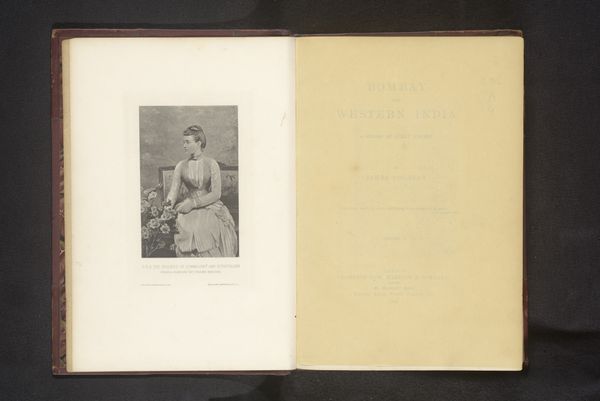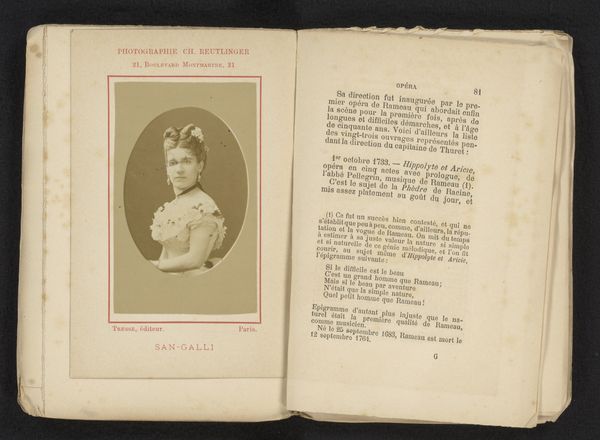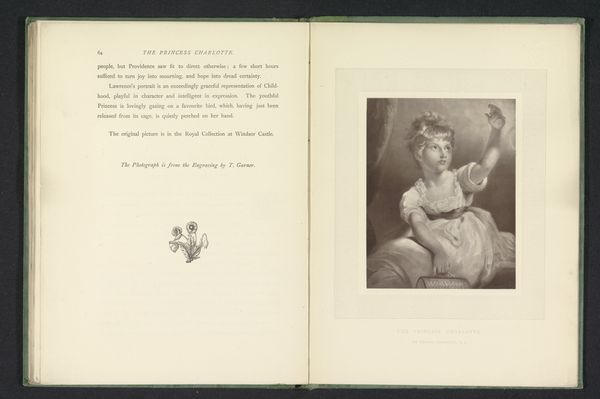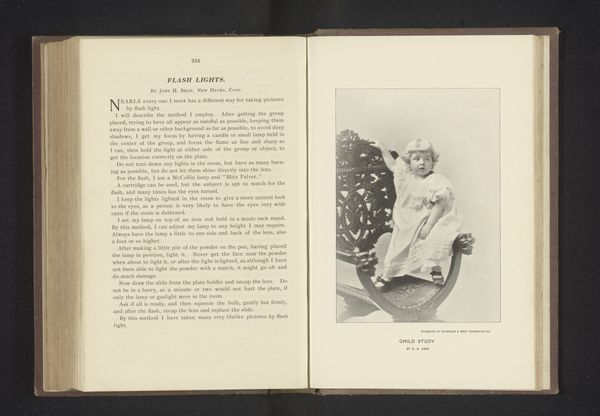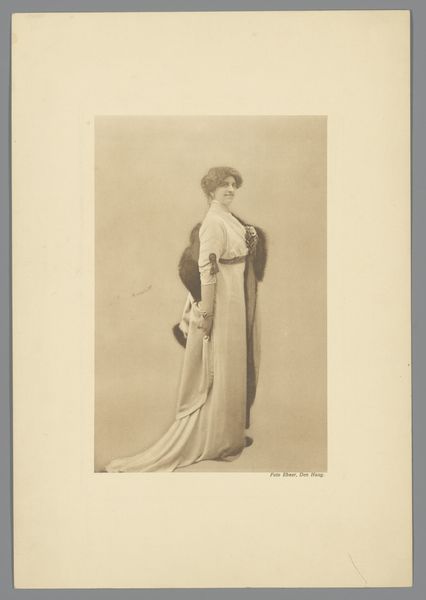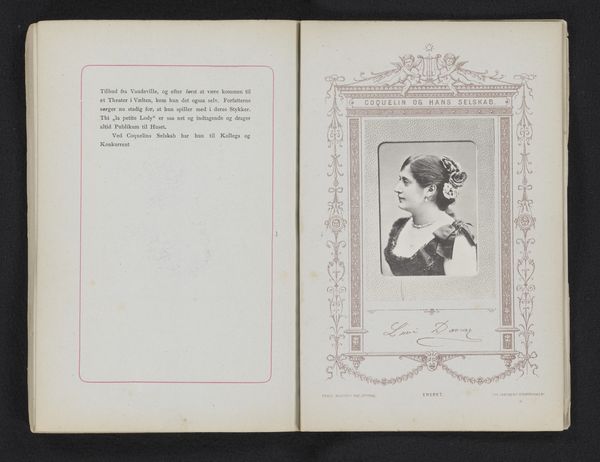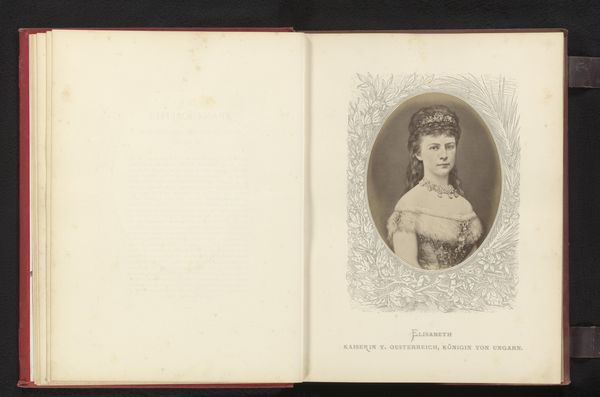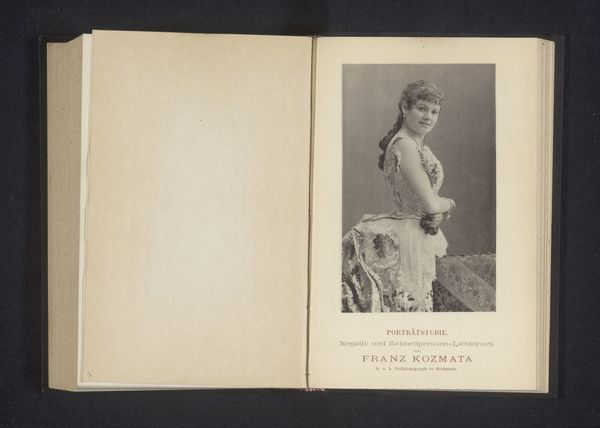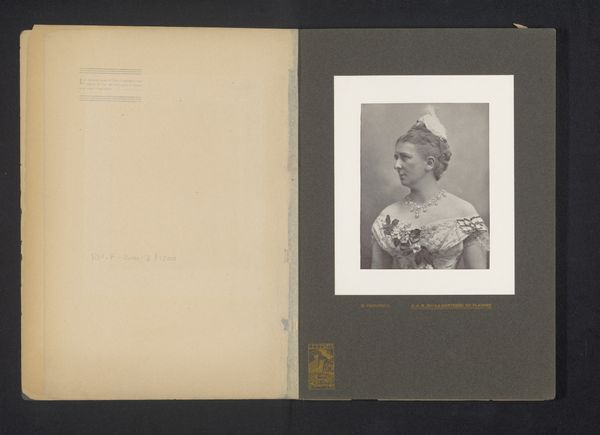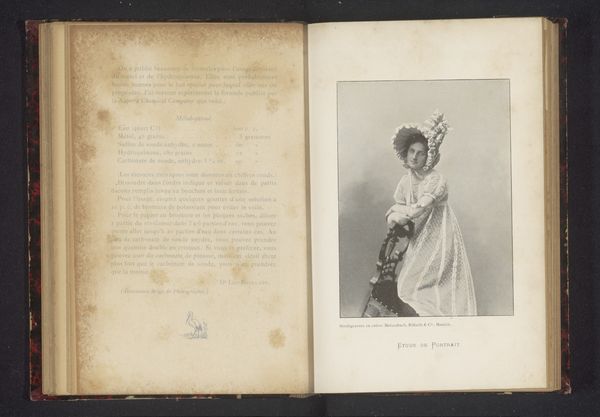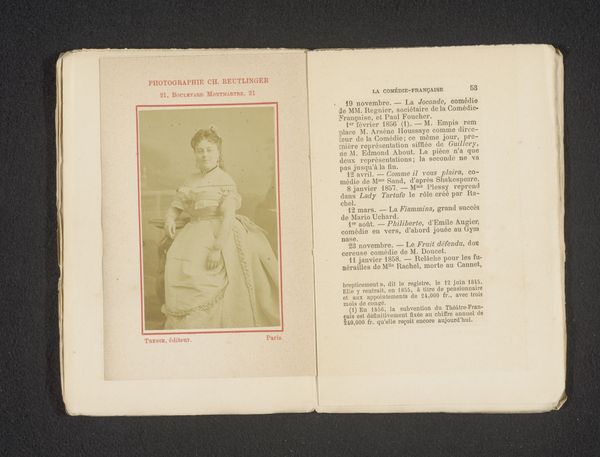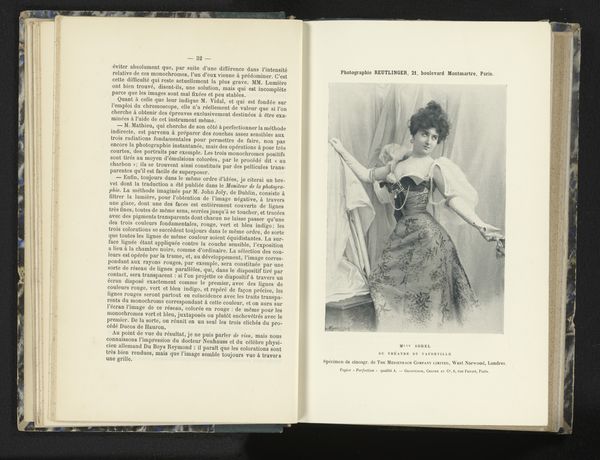
print, photography
#
portrait
# print
#
photography
Dimensions: height 135 mm, width 70 mm
Copyright: Rijks Museum: Open Domain
Curator: This is an intriguing image. Entitled "Portret van een onbekende vrouw met bloemen in haar hand," dating from before 1894, this portrait employs photography, and appears also as a print. Editor: The composition, though, is what immediately strikes me. There's an ethereal, almost dreamlike quality due to the limited tonal range and the juxtaposition of the portrait with that stylized text. It makes me think about the processes of photographic reproduction and printing from the 19th century and the people involved. Curator: Precisely. Note how the figure is rendered – the almost deliberate lack of sharp focus lends itself to a conceptual reading. One could argue it obscures clear subject-object relationships, prompting reflections on representation. Also consider the integration of text, visually reminiscent of illuminated manuscripts, enriching the piece beyond mere portraiture. Editor: The means of its reproduction have created that tonal effect we discussed earlier which does add something. Those flowers look so soft and tactile because of it, while the surrounding poetry brings up questions: Who crafted this page, and with what resources available? Was it meant to record this woman's memory through the act of artistic creation or just celebrate her? Curator: Such queries unveil how art's aura becomes enmeshed with its creation, its material existence. How these components operate through and between each other can become a discourse in itself, challenging a static interpretation of aesthetics. Editor: I see how it complicates traditional notions of artistry and its intrinsic connections to the making processes. In these details lies not simply her captured likeness, but also testament to shared skills—each hand and material playing a critical role. Curator: This interplay reveals how an artwork's significance resides not solely in the visible, but also in the intricate network of artistic choices influencing the interpretation itself. Editor: It offers then, not simply an image, but invites exploration through materials and labor practices, revealing art's function within, and arising from our lives. Curator: Agreed. It invites us to consider it less as static representation and more of as active exchange through context and engagement.
Comments
No comments
Be the first to comment and join the conversation on the ultimate creative platform.
